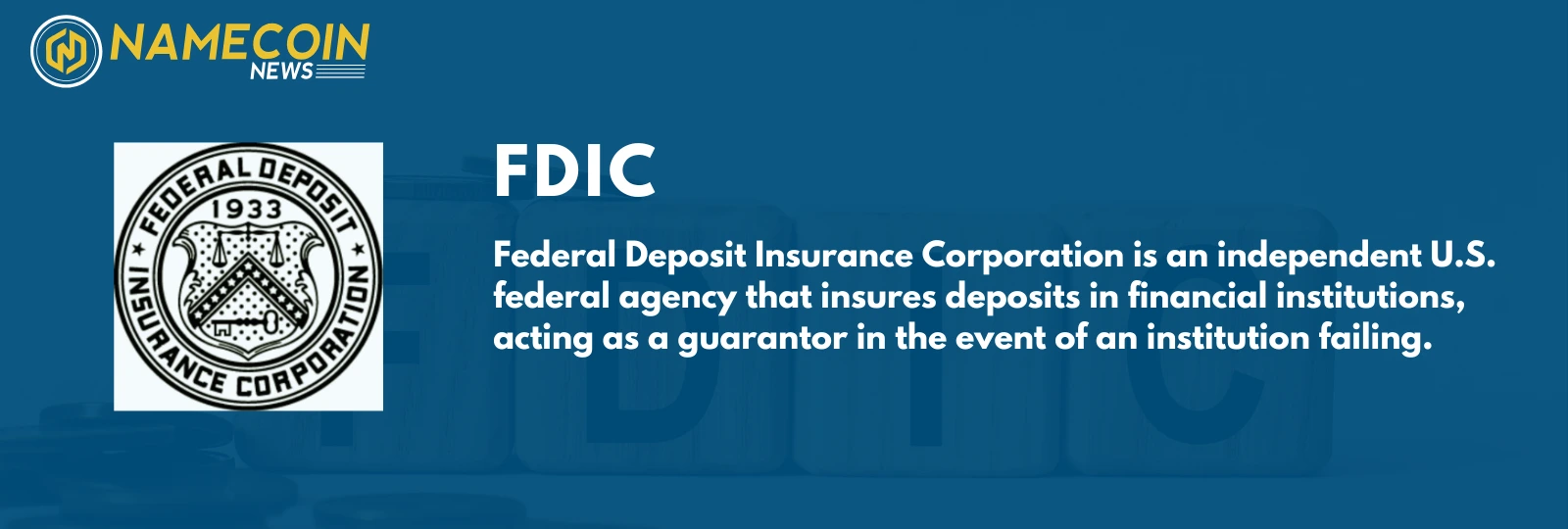Federal Deposit Insurance Corporation abbreviated as FDIC is the most critical organization within the U.S. banking system. Formed to safeguard the depositors and further confidence in these financial organizations, the FDIC guards the deposits made in an insured bank, so no one’s money is unsafe, even if it is stuck in a defunct bank. This article will go on to present what is FDIC full form, meaning, how it works and why does it matters to Americans and their finances.
What Is FDIC?
The Federal Deposit Insurance Corporation is a U.S. government agency that insures deposits in banks and thrift institutions. Established in 1933 as a reaction to bank failures during the Great Depression, the FDIC offers deposit insurance coverage to protect up to $250,000 per depositor, per insured bank. Its purpose is to maintain stability and public confidence in the nation’s financial system.
The meaning of the FDIC goes beyond just the actual insurance. It enforces banking regulations, supervises financial institutions for operational stability, and acts to manage and resolve banks that are on the brink of failure, thereby minimizing impact on the financial system.
How Does the FDIC Work?
FDIC operations are in the form of a collection of premiums from banks and savings institutions in the form of deposits made to fund the Deposit Insurance Fund, known as DIF. Its core functions can be listed as follows:
- Insurance Coverage: FDIC-insured banks will provide coverage of up to $250,000 for each depositor. When you open your account, the insurance comes automatically in deposit accounts by opening your account with the participation bank.
- Risk Assessment: The FDIC maintains a check on the banking health to prevent failures of banks. It enforces the regulations associated with the banking business and supervisions over the institutions in such a manner that sound practices get implemented.
- Bank resolutions: In the event of failures of banks, it captures control and ensures resolution over the failing banks in relatively very short periods of time. It saves depositors from the distress and disorder of banking systems as well.
- Public Awareness: The FDIC also educates consumers on the practice of safe banking, so consumers are informed about their coverage under deposit insurance and how the FDIC operates.
As consumers become aware of the operations of FDIC insurance, they feel more confident with respect to the security of money placed in insured banks.
Why Is the FDIC Important?
It’s also significant to be that which protects public money and also stabilizes the financial system of the United States. The reasons for the significance of FDIC importance lie in the following:
- Confidence in Banking: The FDIC enhances the confidence of banks with consumers, and that is very vital to any economy.
- Consumer Education: It offers resources to consumers in understanding what financial protections they have; for example, FDIC insurance limits and safe banking practices.
FDIC importance extends to each person in the U.S. because it strengthens the public trust in the banking system and safeguards public wealth.
Pros & Cons of FDIC Insurance
Pros
- Deposit Security: It provides coverage of $250,000 per depositor under FDIC insurance, which essentially gives protection to families and individual savings.
- Banking Stability: The FDIC assists in stable banking, thus it minimizes the opportunity for a disruptive run in the banks.
- Consumer Confidence: Knowing that the deposit is safe, this encourages people to bank both to their own advantage and to the benefit of the economy.
- Quick Resolution: The FDIC acts quickly in order to resolve bank failures; thereby, the public will experience the impact for a shorter duration.
Cons
- Insurance Limitations: Insurance cover is limited to $250,000 and may not suffice large account balances in case a bank collapses unless otherwise insured.
- Administrative Costs: FDIC insurance premiums are always passed on by banks in order to increase consumers’ bank fees.
- Moral Hazard: There is the case of deposit insurance contributing to banks becoming more careless to take risks.
Reviewing the advantages and disadvantages of FDIC insurance puts consumers in a better position about where and how they need to bank safely.
History of the FDIC
The FDIC came into being in 1933 following the aftermath of the United States banking crisis during the Great Depression. As hundreds of banks were going under with individuals losing all their hard-earned savings, the United States government formed the FDIC through the Banking Act of 1933 to protect depositors and revitalize confidence in these institutions.
Key Historical Milestones:
- 1933: Establishment of FDIC with up to $2,500 covered in deposits
- 1980: Covered increased to $100,000.
- 2008 Financial Crisis: The cap was increased to $250,000 temporarily and became permanent in 2010
The timeline of FDIC shows the progress that has been made as well as its elasticity in changing times.
Important Facts of FDIC
- No Taxpayer Money: The FDIC is funded through premiums collected from banks rather than through taxpayer dollars.
- Bank Supervision: The FDIC supervises and inspects the safety and soundness of the banks.
- Public Education: The FDIC provides all that consumers need to understand banking rights and coverage.
Conclusion: The Role of FDIC in Banking
The Federal Deposit Insurance Corporation, or FDIC, is one of the most basic elements of the U.S. financial system. Protecting depositor funds stabilizes failing banks and educates consumers on making sound banking decisions, thereby ensuring financial security for millions of Americans. Therefore, any individual living in the United States needs to understand what is the FDIC is and, more importantly, what it offers regarding safe and intelligent banking decisions.

